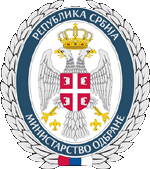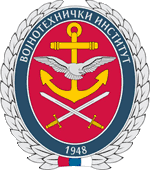|
REPUBLIC OF SERBIA MINISTRY OF DEFENCE
MINISTRY OF DEFENCE Material Resources Sector Defensive Technologies Department
|
The Dependence of the Mechanical Properties of the Triblock-Copolymer SBM on the Polybutadiene IsomerS
Institute of Chemistry, Technology and Metallurgy, Belgrade, Serbia, dragutin@tmf.bg.ac.rs ALEKSANDAR STAJčIĆ Institute of Chemistry, Technology and Metallurgy, Belgrade, Serbia ALEKSANDAR GRUJIĆ Institute of Chemistry, Technology and Metallurgy, Belgrade, Serbia JASNA STAJIĆ-TROŠIĆ Institute of Chemistry, Technology and Metallurgy, Belgrade, Serbia JASMINA STEVANOVIĆ Institute of Chemistry, Technology and Metallurgy, Belgrade, Serbia
Abstract:The mechanical properties of a polymer are influenced by various factors, e.g., varying morphologies, total molar mass, chain topology as well as the solvents used for sample preparation. In poly(styrene)-poly(butadiene)-poly(methylmethacrylate) (SBM) triblock terpolymers, the polybutadiene block is usually a combination of 1,2- and 1,4-isomers. Depending on the chain length, the B microstructure has an enormous influence on the polymers properties. Depending on the presence of 1,2-B and 1,4-B, different thermal properties can be obtained. The total molar masses of the polymers vary within 38-170 kg/mol and the molar mass of the SM blocks are ranging from 24-115 kg/mol. The SBMs have different polybutadiene microstructures ranging from 16-90 mol. % of 1,2-B content. It has been shown that polymers with lower mole % of (1,2) and relatively higher 1,4-B content show increasing stresses during elongation process. In these SBMs, moderate stress drops occurred after yielding. The maximum strain at break was found close to 600% or above. The yield stresses for these polymers were around 15 MPa. On the other hand, at the polymers with higher x(1,2)% and relatively higher 1,2-B contents, lower strain hardening is observed. Keywords: triblock-copolymers, mechanical properties, SBM polymers, structure of polybutadiene.
|
|||||
|
||||||

